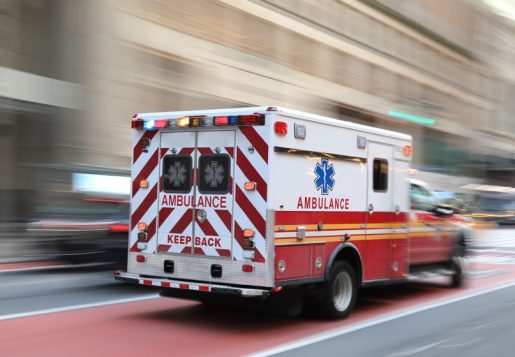Dialing 911 for young patients – is EMS prepared?
Imagine waking up to find your child struggling to breathe. You quickly dial 911 for Emergency Medical Services (EMS) and anxiously await the arrival of an emergency medical technician (EMT) who can help. You expect that the EMT will be equipped with the right training, tools and protocols to provide the specialized care your child needs. You assume the EMS agency is ready to handle pediatric emergencies.
When emergency departments (EDs) are fully prepared to take care of children, that is called “pediatric readiness.” Unfortunately, not all EDs are prepared to care for children in emergency situations, and many EMS agencies remain ill-prepared to care for children despite the critical need for pediatric-specific expertise in emergencies.
Research from the Health Resources and Services Administration’s (HRSA) Emergency Medical Services for Children (EMSC) Program highlights the importance of pediatric readiness. The National Pediatric Readiness Project (NPRP) Assessments have played a key role in improving emergency care for children, as well as advancing research on how pediatric readiness affects patient outcomes and disparities in care.
Findings show that children treated in pediatric-ready EDs have a 76% lower mortality rate when ill and a 60% lower mortality rate when injured compared to those treated in less-prepared departments. This stark difference underscores the profound impact that readiness can have on a child’s survival and recovery.
While children represent only 5-10% of all EMS encounters, and less than 1% of the cases are considered critically ill or injured, the infrequency of pediatric calls makes it even more crucial for EMS clinicians to be well-trained in pediatric care. Unfortunately, pediatric care often constitutes a small portion of EMS education. This gap in training is concerning, as emergency care starts well before a child arrives at the hospital. They may not have equipment for children of all sizes, lack the training on how to use that equipment or may not have enough knowledge to recognize and treat illnesses and injuries in children.
Pediatric readiness within EMS is essential to improving outcomes for children in distress. It remains unclear how well-prepared EMS systems are in caring for children and which specific areas need the most improvement.
The Prehospital Pediatric Readiness Project (PPRP) was developed to address this gap. The PPRP assessment offers a comprehensive, evidence-based method for evaluating EMS systems across the U.S. Created through a collaborative effort of 25 national stakeholder organizations, the project aims to evaluate and improve pediatric readiness in EMS agencies.
In “Development of the National Prehospital Pediatric Readiness Project assessment,” published in Academic Emergency Medicine, we describe the process of creating this national assessment tool. After completing the voluntary assessment, EMS agencies receive a pediatric readiness score out of 100 that shows how ready they are to care for children and a report detailing specific areas for improvement. The tool compares their scores with other similar-sized agencies across the country.
The first round of assessments was open to EMS agencies during summer 2024 with results expected soon. The goal is to drive EMS agencies to improve their readiness scores, ultimately enhancing pediatric emergency care. When you call for help, the last thing you want to worry about is whether EMS clinicians are prepared to care for your child.
The PPRP is a vital step to ensure that EMS systems are equipped for pediatric emergencies, improving outcomes and giving every child the best possible chance for survival.
By Kathryn Kothari, M.D., assistant professor of pediatrics – emergency medicine; medical director of emergency medical services at Texas Children’s Hospital; program director, EMSC Texas at Baylor College of Medicine, Texas Children’s



